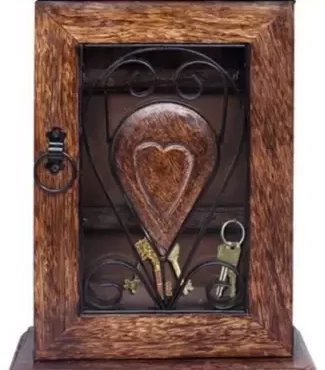- You have no items in your shopping cart
- Continue Shopping


Handiccraft Culture!
- Traditional and Cultural Heritage: Handicrafts often carry a deep cultural and historical significance. They reflect the artistic traditions and skills of a particular region, community, or culture. These crafts can vary widely from one place to another, showcasing the diversity and creativity of human craftsmanship.
- Handmade: The defining characteristic of handicrafts is that they are made by hand, typically without the use of automated machinery. Craftsmen and artisans use their skills to create each piece individually, which results in unique and often high-quality products.
- Materials: Handicrafts can be made from a wide variety of materials, including wood, metal, clay, glass, textiles, paper, and natural fibers. The choice of materials depends on the craft and the traditions of the region.
- Techniques: Different techniques are used in the creation of handicrafts. These can include weaving, carving, pottery, embroidery, knitting, and many more. The specific techniques used depend on the craft and the artisan’s expertise.
- Functional and Decorative: Handicrafts can be both functional and decorative. For example, you may find handwoven textiles that are used for clothing or home décor, as well as decorative pottery or sculptures.
- Supporting Local Artisans: Purchasing handicrafts often supports local economies and artisans. Many regions rely on the sale of these handmade products as a significant source of income.
- Sustainability: Handicrafts are often associated with sustainable and eco-friendly practices. They typically use locally sourced materials, and the production methods tend to be less environmentally impactful than mass-produced items.
- Cultural Exchange: Handicrafts can also serve as a means of cultural exchange, as artisans share their cultural heritage through their craft, and people from different backgrounds appreciate and collect these unique items.
- Types of Handicrafts: Handicrafts come in various forms, including:
- Textiles: This category includes handwoven fabrics, embroidery, quilting, and traditional clothing.
- Pottery and Ceramics: Artisans create pottery, clay figurines, and ceramic art using hand-building or wheel-throwing techniques.
- Jewelry: Handmade jewelry can be crafted from a variety of materials, such as metals, gemstones, beads, and more.
- Woodwork: Woodcraft includes carving, woodworking, and creating wooden items like furniture, sculptures, and decorative pieces.
- Metalwork: Skilled metalworkers create decorative items, sculptures, and utilitarian objects from metals like iron, brass, and copper.
- Paper Crafts: This category includes origami, paper cutting, calligraphy, and handmade paper.
- Glasswork: Glass artisans create decorative glass art, stained glass, and blown glass items.
- Leatherwork: Artisans make leather goods, such as bags, wallets, and footwear.
- Basketry: Basket weaving and basketry are traditional crafts used to create baskets and containers from natural materials like reeds, straw, or bamboo.
- Candle Making: Handcrafted candles come in various shapes, sizes, and scents.
- Stone and Gemstone Craft: Artisans create sculptures, jewelry, and decorative pieces from natural and semi-precious stones.
- Doll Making: Handmade dolls, often reflecting regional traditions, are crafted by artisans around the world.
- Cultural Significance: Handicrafts are often deeply rooted in the cultural and historical heritage of a region. They reflect the traditions, stories, and artistic sensibilities of the people who create them. These crafts may incorporate symbols, colors, and designs that have cultural significance.
- Economic Impact: Handicrafts play a vital role in many economies, providing income and employment opportunities to artisans, particularly in rural and economically disadvantaged areas. When you purchase handmade crafts, you often support local communities and help preserve traditional crafts.
- Sustainability: Handicrafts are often more sustainable than mass-produced items. They frequently use locally sourced, renewable, or recycled materials. Additionally, handmade production methods are typically less resource-intensive and have a lower environmental impact.
- Global Trade and Fair Trade: Many organizations and initiatives promote fair trade principles, ensuring that artisans receive fair compensation for their work and operate in safe and ethical conditions. Fair trade practices aim to empower artisans in developing countries and support their craft traditions.
- Artistic Expression: Handicrafts provide artisans with a medium for creative expression. Artists can use their skills and imagination to produce unique and beautiful pieces.
- Preservation of Traditional Knowledge: Handicrafts help preserve traditional knowledge and skills that might otherwise be lost in a rapidly changing world. Many crafts are passed down through generations.
- Collecting and Appreciating Handicrafts: Many people collect handicrafts as a way to connect with different cultures, support artisans, and enjoy the beauty of handmade items. Collecting can be a hobby and a form of cultural appreciation.





